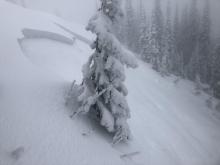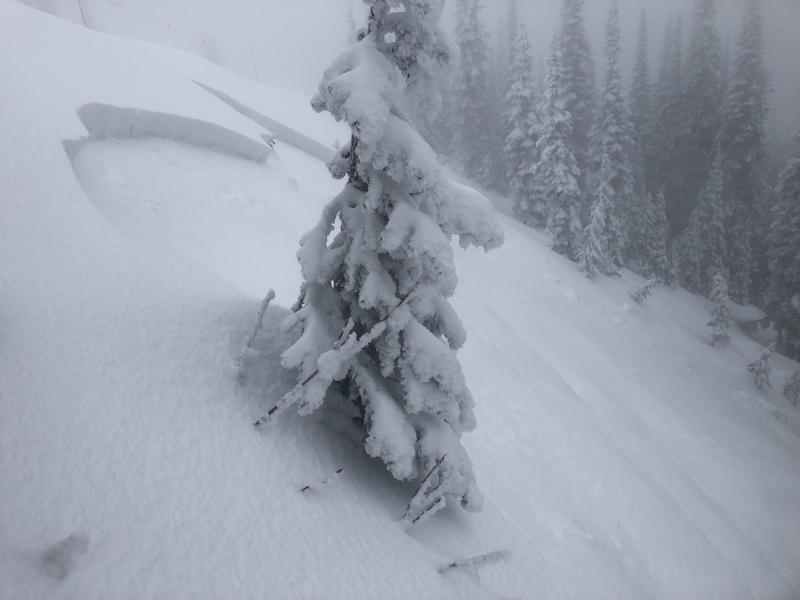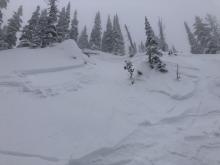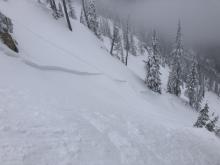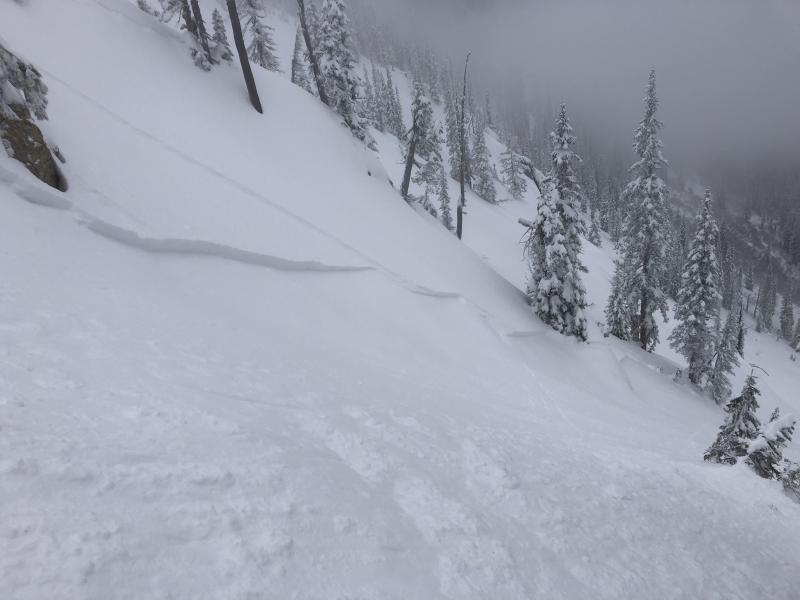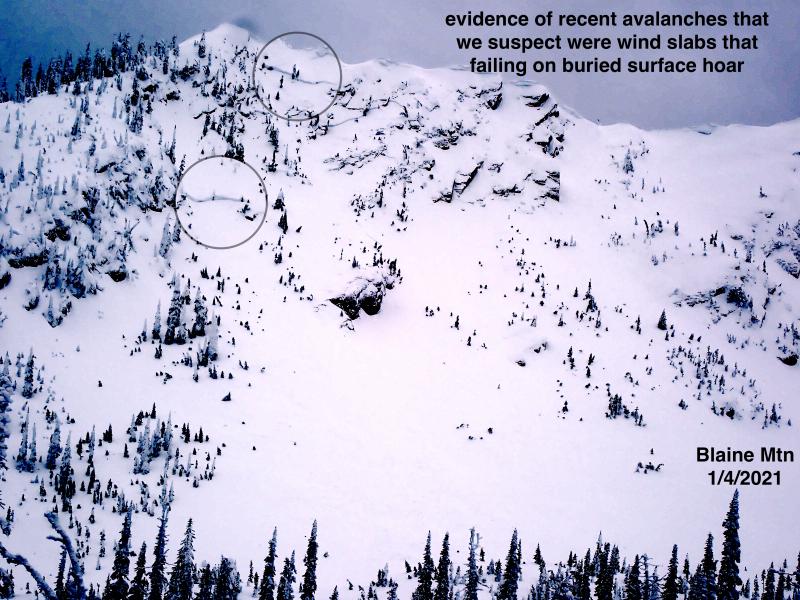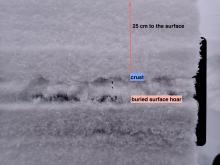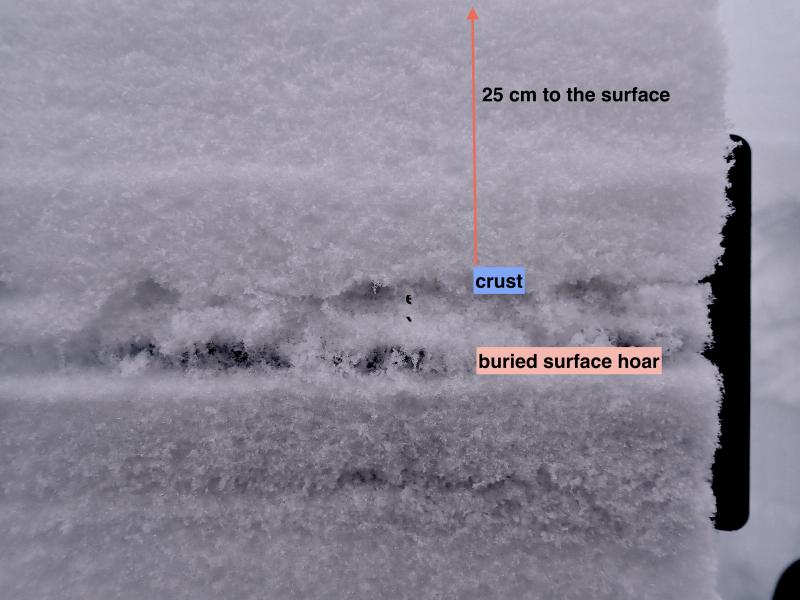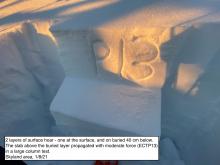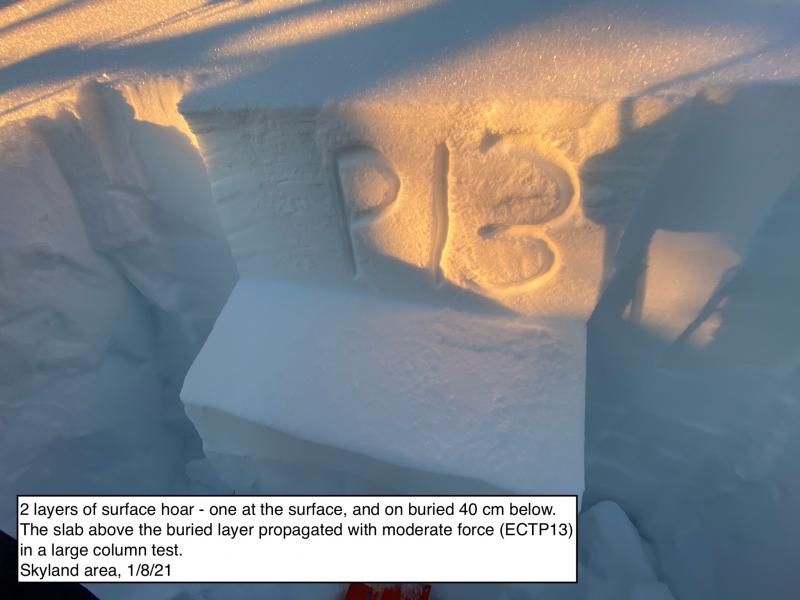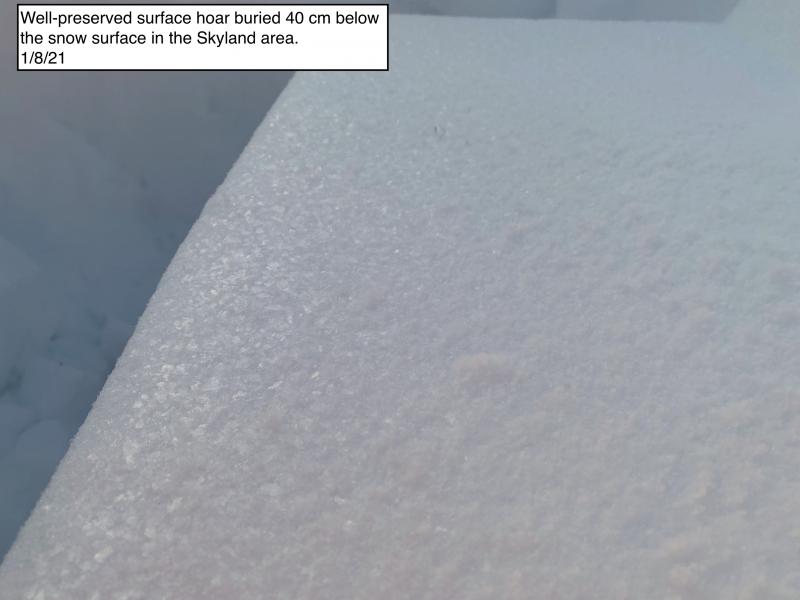| Thursday | Thursday Night | Friday | |
|---|---|---|---|
| Cloud Cover: | Mostly Cloudy | Mostly Cloudy | Mostly Cloudy |
| Temperatures: | 24 to 28 deg. F. | 22 to 25 deg. F. | 26 to 29 deg. F. |
| Wind Direction: | Southwest | Southwest | Southwest |
| Wind Speed: | 10-15 G 25 | 10-15 G 25 | 10-15 |
| Snowfall: | 4" to 6" in. | 2 to 4" in. | 0" in. |
| Snow Line: | 3500' | 3500' | 3500' |
Swan Range
How to read the forecast
Rapid loading from new snow and wind has created very dangerous avalanche hazards that increase with elevation. Natural and human triggered avalanches will be more likely the higher you dare to go. Plan to limit yourself to slopes less than about 30 degrees as you gain elevation. Avoid being below slopes steeper than that, especially those near ridgelines where winds continue to load steep start zones.

4. High
?
Above 6500 ft.
3. Considerable
?
5000-6500 ft.
2. Moderate
?
3500-5000 ft.
- 1. Low
- 2. Moderate
- 3. Considerable
- 4. High
- 5. Extreme
-
Type ?
-
Aspect/Elevation ?

-
Likelihood ?CertainVery LikelyLikelyPossible
 Unlikely
Unlikely -
Size ?HistoricVery LargeLargeSmall

Since Wednesday afternoon, over 12 inches of dense new snow has accumulated on top of low-density powder, graupel, rime crusts, and surface hoar. Gusty southwest winds have built larger and stiffer slabs below upper elevation ridgelines and in gullies. Another 6 inches of snow is expected today, so the danger will continue to rise. Natural avalanches are likely in and below steep, wind loaded terrain. The likelihood and potential size of triggered slabs will increase as you gain elevation. Shooting cracks and collapsing in dense new snow are warning signs that you are pushing the envelope too far. Know what’s above you and limit your exposure to steep terrain overhead. Slopes less than about 30 degrees at lower elevations are the safests terrain to ride.
-
Type ?
-
Aspect/Elevation ?
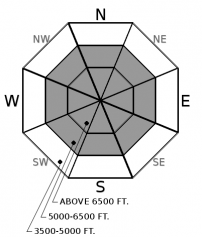
-
Likelihood ?CertainVery LikelyLikelyPossible
 Unlikely
Unlikely -
Size ?HistoricVery LargeLargeSmall

Persistent weak layers are being saddled with an extra 2” of new water. This rapid new loading may wake up faceted crusts found over 2 feet deep, especially where the snowpack is thinnest. You're most likely to trigger dangerously large slabs that break on faceted crusts near rocky outcrops and convex rolls, where the snowpack is stretched and shallow. The debris from avalanches that break in the storm snow may also release slabs that break on these deeply buried layers. Plan to limit your exposure to steep terrain overhead as new and drifted snow packs a new punch to the snowpack.
Observers in the Swan Range yesterday reported increasing snowfall and wind in the afternoon. In the past 24 hours, the Noisy Basin SNOTEL has been gut punched with 1.7 inches of new water. Snow fell at rates of 1 to 3 inches per hour overnight. The Mt. Aeneas weather station recorded periods of moderate to strong winds during the heaviest period of loading. We expect another half inch of water and more gusty winds this morning. So, very dangerous avalanche conditions have developed and slabs of new and drifted snow will only be larger and more sensitive to your weight as you gain elevation. All that new load is further burdening persistent weak layers buried 2+ feet deep in the snowpack. Avalanches that fail on faceted crusts can be very large and run down low in their tracks. Storm slab avalanches can be enough to trigger these deeper problem layers.
Elsewhere across the region, 2 to 5 inches of new snow have fallen and another 1 to 3 are expected today. While winds in the Whitefish and Flathead Ranges have gusted at snow-moving speeds, they've only averaged in the 5 to 10 mph. Storm slabs will be smaller where less new and drifted snow have accumulated. I expect that you can find trouble, if you’re look for it, below favored ridgelines and near breakovers. Using small test slopes on the same aspect and elevation as you want to ride are a good way to see how new slabs are bonding. Use caution and dial back your terrain choices if you see cracking in 6 inches or more of denser new snow.
The last persistent slab in the Flathead Range failed around Christmas. Above about 6000 feet, there is the off-chance of triggering a large slab that breaks deep in the snowpack. Facets around crusts buried earlier this month have been found on just about every aspect. Snowpack tests continue to show propagating failures where the snowpack is shallow. The most suspect terrain for persistent slab avalanches is on southerly and easterly slopes, near rocky outcrops, and where the snowpack is stretched over convexities. Reduce your exposure to that kind of terrain as more precipitation reloads buried weak layers.
Heavy snowfall overnight will increase again this morning, especially in the Swan Range and near the Montana/Idaho border. Showers will linger this afternoon and into Friday morning. Heavy mountain snow and strong winds are still on tap for the weekend.
This forecast applies only to backcountry areas outside established ski area boundaries. The forecast describes general avalanche conditions and local variations always occur. This forecast expires at midnight on the posted day unless otherwise noted. The information in this forecast is provided by the USDA Forest Service who is solely responsible for its content.



